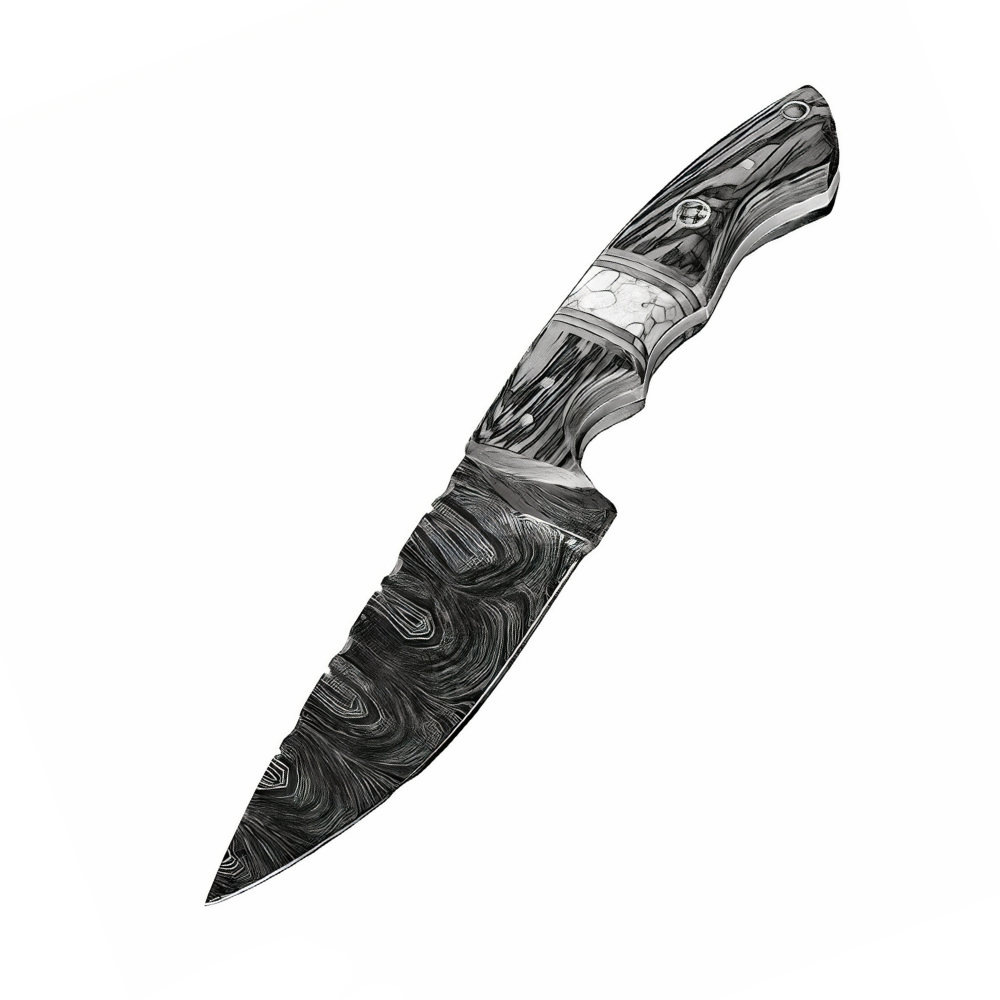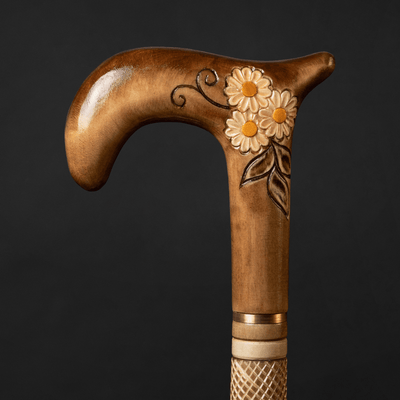You have no items in your shopping cart.
Recent Posts
-
The Art of Christmas Design: Walking Canes That Celebrate the Season in Style
-
How an Ergonomic Walking Cane Handle Prevents Hand and Wrist Strain?
-
How to Walk With a Cane Correctly to Avoid Back or Shoulder Strain?
-
5 Common Mistakes People Make When Buying a Walking Cane (and How to Avoid Them)
-
How to Choose a Walking Cane That Reflects Your Personality (Not Just Your Needs)?
-
Walking Canes That Match Formalwear for Weddings and Events
MOST POPULAR NOW
12
Oct

Collecting of walking sticks is termed a rabology. It can become a great hobby for many years and it will not lose it`s value.
Rabology
Walking sticks and canes became popular during the 17th century. At this time, they began replacing swords as a part of a gentleman’s wardrobe. They were also decorative accessories that denoted their wearers’ status in society. In 1702, it was considered a privilege to carry a walking stick or cane in London. Men were required to carry a licence, or lose the privilege. Part of this licence reads:
You are hereby required to permit the bearer of this cane to pass and repass through the streets of London or anyplace ten miles of it without theft or molestation provided that he does not walk with it under his arm, brandish it in the air or hang it on a button in which case it shall be forfeited and I hereby declare it may be forfeited to anyone who shall think it safe to take it from him.
You are hereby required to permit the bearer of this cane to pass and repass through the streets of London or anyplace ten miles of it without theft or molestation provided that he does not walk with it under his arm, brandish it in the air or hang it on a button in which case it shall be forfeited and I hereby declare it may be forfeited to anyone who shall think it safe to take it from him.
Forfeiting a cane could have proved dangerous as some contained hidden swords. Cane guns, which housed hidden single or double-barrelled shotguns, were also available. Another novelty were tippling canes, or tipplers, with hidden vials used to carry alcohol. These became especially popular much later during the prohibition years of the USA.
The difference between a walking stick and a cane is the materials of which they are made. Sticks can be made of ivory, metals, whalebone and assorted woods. Canes are made from bamboo, rattan, Malacca or hardy reeds. Americans, however, usually refer to walking sticks as canes.
The Whanganui Regional Museum has a large collection of sticks and canes with interesting grips made from a many different materials and in many different styles. One has a concealed umbrella while another has an ivory grip with a scrimshawed image of a Japanese warrior brandishing a sword. One handsome example is made from a dark wood and has a carved elephant head, complete with ivory tusks and inlaid with small ivory dots. The head of William Shakespeare adorns the grip of another ebony stick.
Today, walking sticks tend to be used to aid walking or for hiking. Some examples are highly prized and sought after by collectors. As a side note, a collector of walking sticks is called a rabologist.

Displaying your cane collection is a matter of personal taste. A small collection can be attractively displayed in something as simple as an umbrella stand. There are many stands specifically made to display canes and they can vary greatly in shape and price. Wall racks also make attractive displays.
Porcelain, glass, enamel and jewelled canes should be displayed carefully so as not to allow them to bump one another. Many a fine cane has been damaged due to a careless display. As a dealer in important and rare canes, I carry an extensive selection of display cases that allow for safe and handsome displays.
Building any kind of fine antique collection is a highly personal endeavor and whichever road you choose to follow, if you adhere to the premise of quality over quantity you will be well on your way to amassing a valuable collection. Collections of any kind that hold superior value and importance are those whose pieces were selected primarily for their quality, rarity or provenance and secondly for their price.
Porcelain, glass, enamel and jewelled canes should be displayed carefully so as not to allow them to bump one another. Many a fine cane has been damaged due to a careless display. As a dealer in important and rare canes, I carry an extensive selection of display cases that allow for safe and handsome displays.
Building any kind of fine antique collection is a highly personal endeavor and whichever road you choose to follow, if you adhere to the premise of quality over quantity you will be well on your way to amassing a valuable collection. Collections of any kind that hold superior value and importance are those whose pieces were selected primarily for their quality, rarity or provenance and secondly for their price.

Collectible canes and walking sticks are available in a wide range from many cultures and time periods.
The basic purpose of a walking stick or cane is to help a person balance while walking. Walking sticks used by hikers aid in clearing the way as well as breaking downhill or added support for going uphill. They have also been known to be used as a defensive or offensive weapon which may even conceal a blade in the end.
Around the 17th or 18th century a rigid stick took over from the sword as a part of the European gentlemen’s wardrobe and was used primarily as a walking stick. In addition to its value as a decorative accessory it also continued to fulfil some of the function of the sword as a weapon. Many of the old vintage canes and walking sticks are now sought after by collectors.
We have created walking cane stands for you to be able to collect your walking sticks.
Cane stands and walking stick stands are functional, expertly crafted, and beautifully designed to add elegance and sophistication to the decor in your home or office. A cane holder, also called a cane rack, is used to hold and store walking sticks when you aren’t using them. These stands keep canes upright to allow easy access without having to bend or reach down.
To some folks, a cane stand might look like a big space dedicated to one purpose only, i.e. providing a spot to stack away canes when not using them. However, there is more to a cane stand than this elementary viewpoint. Most of the cane stands popular today are made from wood.
The basic purpose of a walking stick or cane is to help a person balance while walking. Walking sticks used by hikers aid in clearing the way as well as breaking downhill or added support for going uphill. They have also been known to be used as a defensive or offensive weapon which may even conceal a blade in the end.
Around the 17th or 18th century a rigid stick took over from the sword as a part of the European gentlemen’s wardrobe and was used primarily as a walking stick. In addition to its value as a decorative accessory it also continued to fulfil some of the function of the sword as a weapon. Many of the old vintage canes and walking sticks are now sought after by collectors.
We have created walking cane stands for you to be able to collect your walking sticks.
Cane stands and walking stick stands are functional, expertly crafted, and beautifully designed to add elegance and sophistication to the decor in your home or office. A cane holder, also called a cane rack, is used to hold and store walking sticks when you aren’t using them. These stands keep canes upright to allow easy access without having to bend or reach down.
To some folks, a cane stand might look like a big space dedicated to one purpose only, i.e. providing a spot to stack away canes when not using them. However, there is more to a cane stand than this elementary viewpoint. Most of the cane stands popular today are made from wood.
Also Purchased
-
Beige Walking Cane for Ladies Chamomile Flower, Wooden Walking Stick
Introducing our beautiful Beige Walking Cane for Ladies with Chamomile Flower, a Wooden Walking Stick that is hand carved and handmade, making it both pretty and unique. This walking cane...$90.00$79.50 -
Exotic Burl Wood Walking Cane – Fashionable Artisan Stick
A sculptural statement in deep, oceanic blue — this walking cane is more than a support accessory, it's wearable art. Meticulously hand-shaped from stabilized burl wood, the handle evokes the...$425.00 -
ArtWalkingSticks™ MAGIC Walking Cane, Handmade - Make to Order
This piece of art is created for those who value details. We make one of a kind, handcrafted wood and resin canes. Our Wooden Canes are completely unmatched in creativity....$430.00 -
Umbrella with Eagle Handle, Fashion Umbrella For Men
Make a bold and fashionable statement with our Umbrella with Eagle Handle - a unique and functional accessory designed for men. The striking eagle handle is the highlight of this...$325.00 -
Fashionable Lion Shoehorn Long Handle, Pearly Brown Shaft, Handmade
Introducing our Fashionable Lion Shoehorn, a handcrafted, long-handled shoe horn with a pearly brown shaft that's both stylish and practical. The intricate Lion design adds a touch of elegance to...$240.00 -
ArtWalkingSticks™ MAGIC Red Walking Cane - Unisex, Handmade
This piece of art is created for those who value details. We make one of a kind, handcrafted wood and resin canes. Our Wooden Canes are completely unmatched in creativity....$425.00
































